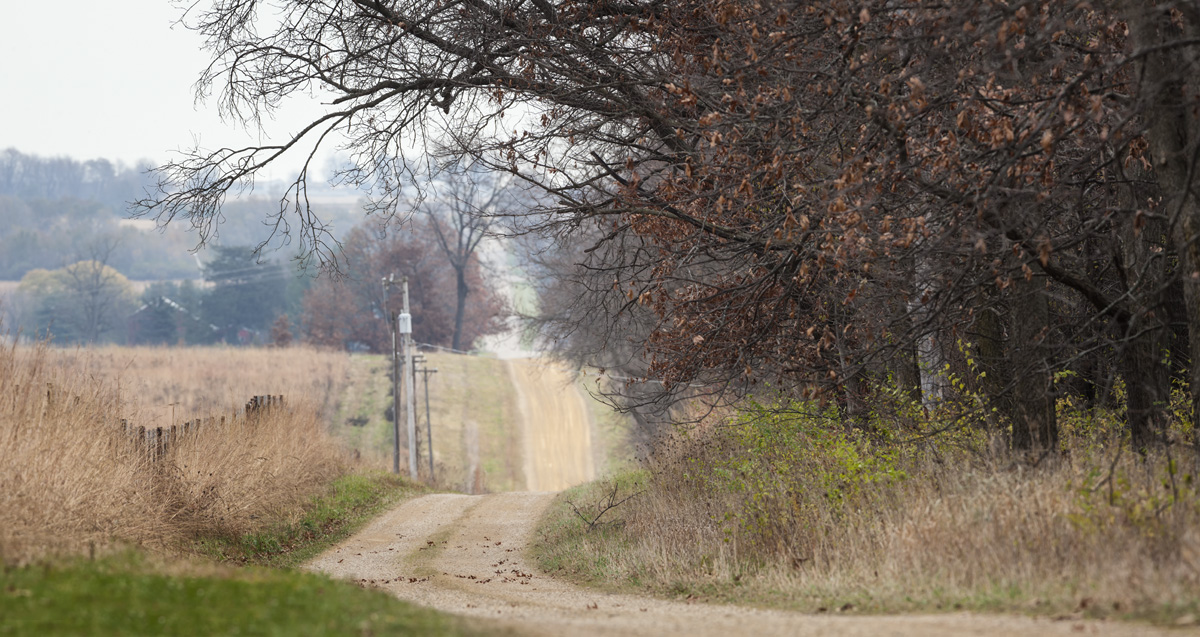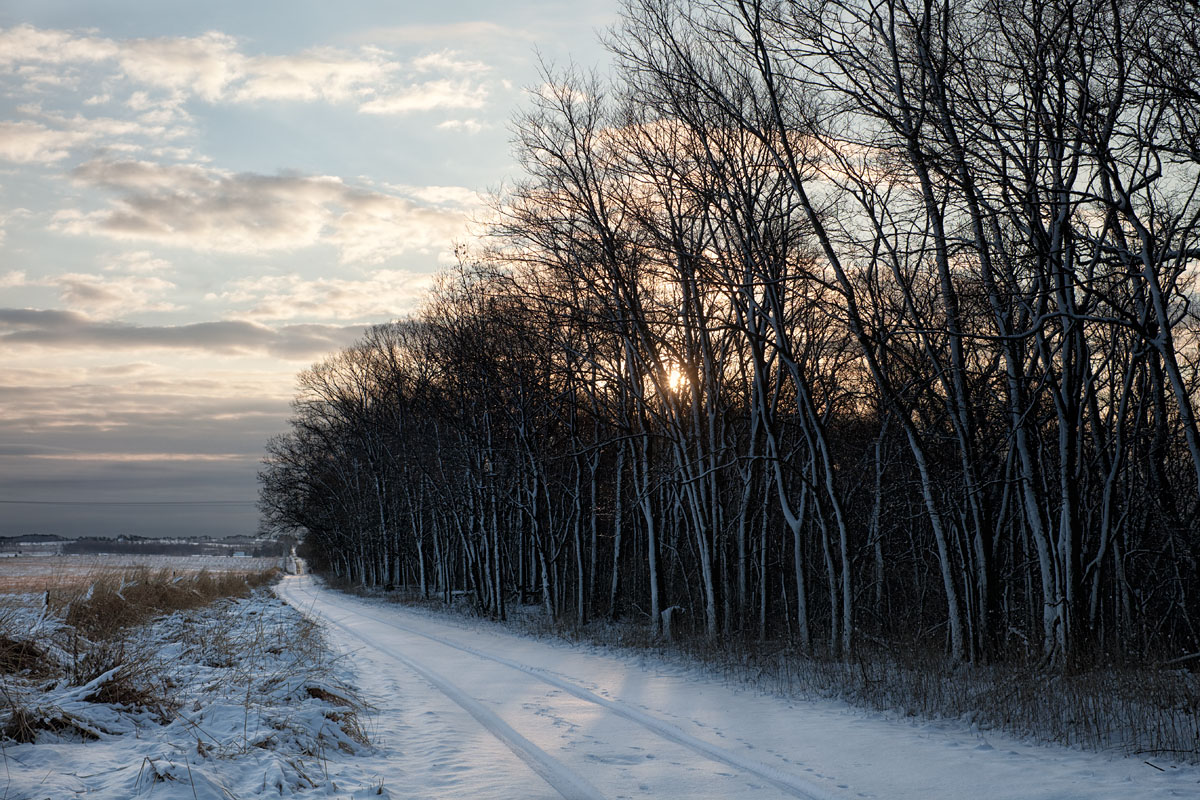Tom Robbins
Active member
I recently went to a Nature Conservancy area where bison were recently introduced. The hope was to get some eyeball to eyeball views of the animals from a respectful distance. But, the old sunlight mojo wasn't working and the subjects stayed put in tall grass.
It seemed a total shame to haul the old Canon 600mm f/4 all that way without using it, so I played around a bit and wound up with an almost 1:2 aspect ratio pano from two horizontally shifted shots. The lens collar and Wimberley gimbal head made leveling things out pretty straightforward. The lens and camera was mounted near its center of gravity, which may have been somewhere near the nodal point.
Anyway, here's the weird result:

Stone Barn Road, November
I was struck by a couple of things. First, the depth of field is remarkably shallow, even at the set aperture of f11. Second was the compression of the visual elements. The gravel road is fairly straight, but the slight wiggles and bends are greatly magnified here. The same effect is also seen as slight variations of terrain are turned into significant looking hills and dales.
Oh, the bison were hunkered down and out of sight in the grass at the left side of the frame. Crafty devils...
I'll keep the experience in mind, but right now I can't imagine a situation where this approach would be useful.
It seemed a total shame to haul the old Canon 600mm f/4 all that way without using it, so I played around a bit and wound up with an almost 1:2 aspect ratio pano from two horizontally shifted shots. The lens collar and Wimberley gimbal head made leveling things out pretty straightforward. The lens and camera was mounted near its center of gravity, which may have been somewhere near the nodal point.
Anyway, here's the weird result:

Stone Barn Road, November
I was struck by a couple of things. First, the depth of field is remarkably shallow, even at the set aperture of f11. Second was the compression of the visual elements. The gravel road is fairly straight, but the slight wiggles and bends are greatly magnified here. The same effect is also seen as slight variations of terrain are turned into significant looking hills and dales.
Oh, the bison were hunkered down and out of sight in the grass at the left side of the frame. Crafty devils...
I'll keep the experience in mind, but right now I can't imagine a situation where this approach would be useful.

